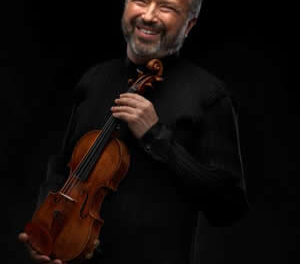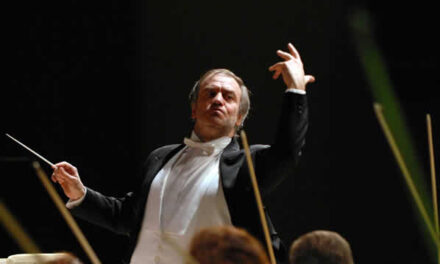The Ciompi Quartet (Eric Pritchard and Hsiao-mei Ku, violins, Jonathan Bagg, viola, and Fred Raimi, cello), with Randall Love, piano, entertained a packed auditorium for the “Sights and Sounds on Sundays” series of the Raleigh Chamber Music Guild at the NC Museum of Art. The program — “Form, Content, Aesthetic: The Long Shadow of Romanticism” — provided pieces from Beethoven’s late period and nineteenth, twentieth and twenty-first century connections to them. Pritchard, as spokesman for the quartet, provided clues to the connection between the three couplets of music.
The program opened with the first movement, marked “Assai sostenuto-Allegro,” of Beethoven’s Op. 132. As I listened to the extraordinary performance of this music I thought how Haydn, as creative and innovative as he was in his development of the quartet form just a few decades earlier, might have shaken his head in utter confusion about what Beethoven was doing here. The music starts slowly, pensively, and then dashes off in what seems to be three other directions. The sonata form, very modified, is not easily recognizable. Hearing this work is like trying to follow a James Joyce novel as though it were normal exposition. Yet in the final analysis, the meaning is in the form as a whole.
Young Mendelssohn heard this work and was greatly influenced by it. His Opus 13 quartet is in the same key, and the Adagio-Allegro movement reflects the form and structure of Beethoven’s work, though in a more sustained lyrical manner for the most part.
The next model was Beethoven’s “Große Fuge,” Op. 133, held by many to be his most complex piece, one that is challenging for performers and listeners as well. It begins with a brief quiet statement, and then the listener is pounced upon by raw anger and, in turns, playfulness, mellowness, and more anger, which becomes again playful and draws to a conclusion with sudden stops and starts that leave the listener unsure of where this music is going next. Pritchard commented that Stravinsky said, “This music was modern when Beethoven wrote it and it will always be modern.”
Coupled with this was the world premiere of Bill Robinson’s “Variations on the ‘Große Fuge’ for Piano Quintet.” Robinson received unique exposure to the “Große Fuge” while a student at Eastman School of Music in the early ’70s. He and some friends listened to it every other night for at least two months. He began working on the present piece in 1974 and, after detours and roadblocks along the way, including disabling arthritis and work on a degree in physics, he has produced a fascinating and delightful work.
Robinson’s piece is a variant on the “Große Fuge.” It is as though he walked down the same path Beethoven strolled, but the path has encountered remarkable transformations (as any path will) over the intervening years. Some of Beethoven’s themes and the form are recognizable, but there are startling transformations as the music canters along. The development of romanticism is heard. In one section, marked “Tempo Bordello,” the piano plays a blues riff against the strings. Whiffs of jazz flash by, and modern compositional techniques are heard. The playful portions seem to want to turn angry but never quite do. At the end, the strings hold a mesmerizing tone cluster, pianissimo, and the pianist pounds with frightful force a series of chords reminding us of the source of inspiration. The performance was a tour de force by the Ciompi four and Love at the piano. It was a unique and satisfying listening experience and the audience vigorously showed their approval.
The final couplet linked the Adagio movement of Beethoven’s Quartet in C-sharp minor, Op. 131, and the “Fuga, Adagio religioso, Sereno” movement of George Rochberg’s String Quartet No. 4. Both illustrate composers who — if you will — have written wild and outlandish music but who could still write in musically astonishing, lyrical and beautiful, absolutely beautiful, manners.
We are grateful for all: the passion and honesty of Beethoven, the romantic lyricism of Mendelssohn, the ingenious creativity of Robinson, the touching sense of otherworldliness of Rochberg, and the treasured skill of the Ciompi Quartet and Randall Love. It was a fine concert for the “Sights and Sounds on Sundays” series of the Raleigh Chamber Music Guild and the North Carolina Museum of Art.












